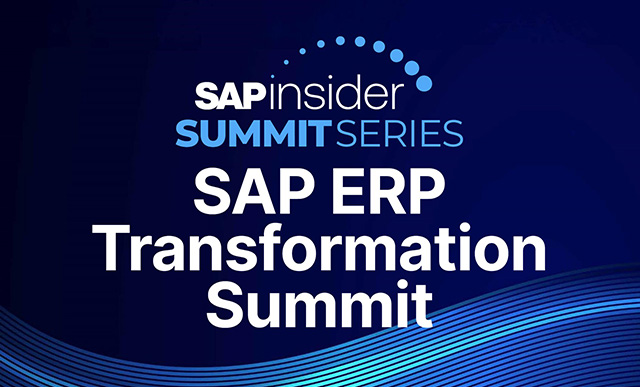Business transformation, innovation, sustainability and resiliency were key themes in majority of SAP Sapphire 2022 session tracks on days 1 and 2, including the opening keynote by Christian Klein. There is another underlying theme that you will find embedded in most of these sessions- cloud as a strategic enabler. It is becoming much more apparent that cloud is being seen as THE foundational component for generating technology based innovation. And this very well translates into every area, including analytics and automation. SAPinsider published a report specifically focused on this topic,
analytics in the cloud, in Dec 2021 and will be publishing another report focused on supply chain planning in the cloud next month. But what role exactly does cloud play in generating innovation ? As Christian Klein highlighted in his keynote: "A true business transformation will not happen just by IT migration to the cloud".
As Christian pointed in his keynote, cloud is only a part of an overall transformation journey. And another key aspect that Christian highlighted was that the process of business transformation, as defined in the RISE with SAP business model, starts with process mining, the foundational aspect of process intelligence. In this article, we explore how SAPinsiders can leverage process intelligence capabilities with cloud to generate innovation.
Process Intelligence Driven Innovation in The Cloud
In our
SAPinsider process automation benchmark report 2022, we highlighted that innovation plays a key role in building products and services that enhance customer experience. And technology is the enabler that helps generate innovation. The goal should be to leverage technology to erase your existing constraints and deliver innovative results in areas like:
- Enhanced customer or user experience
- Improved service or product quality
- Accelerated time to market
Below are few examples of the kind of capabilities you can build in these areas:
Enhanced customer or user experience: An example of enhancing customer experience through process intelligence and cloud is the ability to provide real time updates, in the order to deliver business process. This capability can be made more granular by combining it with additional technologies like Internet of Things (IoT).
Improved service or product quality: An example here is leveraging process intelligence data for smart process quality control. An example is an AI algorithm that analyzes incoming orders data to ensure that any errors are flagged. This solution can significantly enhance service delivery by reducing errors. While such a solution can be built on-premise as well, the scalability aspects, specifically if the data being generated is huge, can best be handled in cloud.
Accelerated time to market: Leveraging process intelligence data across your business processes helps you optimize your business processes, and in many cases, reduce cycle time. This impacts your time to market, if the processes impacts the time to market timeline. However, establishing this type of capability requires that you have a process hub operating in near real time. The scale and latency requirements of a process hub can be best realized in the cloud.
What Does This Mean for SAPinsiders?
While the examples above are indicative, the opportunities to generate innovation are many. Some aspects that SAPinsiders need to keep in perspective when they embark on this journey are:
Define a cloud-based tool adoption roadmap. Resistance to change has been identified as a key obstacle to absorbing cloud-based capabilities by SAPinsiders in many of our research reports. You need to build an adoption roadmap that can help align people with objectives. These roadmaps typically start with formulating strategic objectives and identifying strategic opportunities. In this stage, you prepare for your cloud adoption journey by evaluating technologies and getting a handle on key adoption practices and potential impacts of organizational change. Embedding elements like ideating, prioritizing, and prototyping are all elements of the adoption roadmap, allowing stakeholders and those involved to build understanding and trust of cloud-based process intelligence capabilities.
Perform an extensive current state workload assessment. At the granular level of technology, a thorough analysis of your process intelligence tools workload portfolio is critical. This is an exercise for solution architects where they will need to determine the current workloads, both on-premise and cloud-based, and understand how they need to evolve in the future. Since most large entities may have a large portfolio of tools, including process intelligence tools, this may be an extensive exercise. Hence, it needs to be planned accordingly in project planning.
Understand the strategic role of your solution architects. As adoption of cloud proliferates, the criticality of having good solution architects will increase exponentially. This critical resource group helps empower developers and engineers during the project execution phase, but they need to play a critical role in cloud-based process intelligence strategy formulation as well. A suggested best practice is to involve senior architects when the CIO or CAO starts strategizing about cloud-based process intelligence solutions. Hiring these resources strategically is another key imperative. Solution architects are typically specialized in designing specific types of solutions. Hence, you will need to build a specific portfolio of solution architect skillset.









